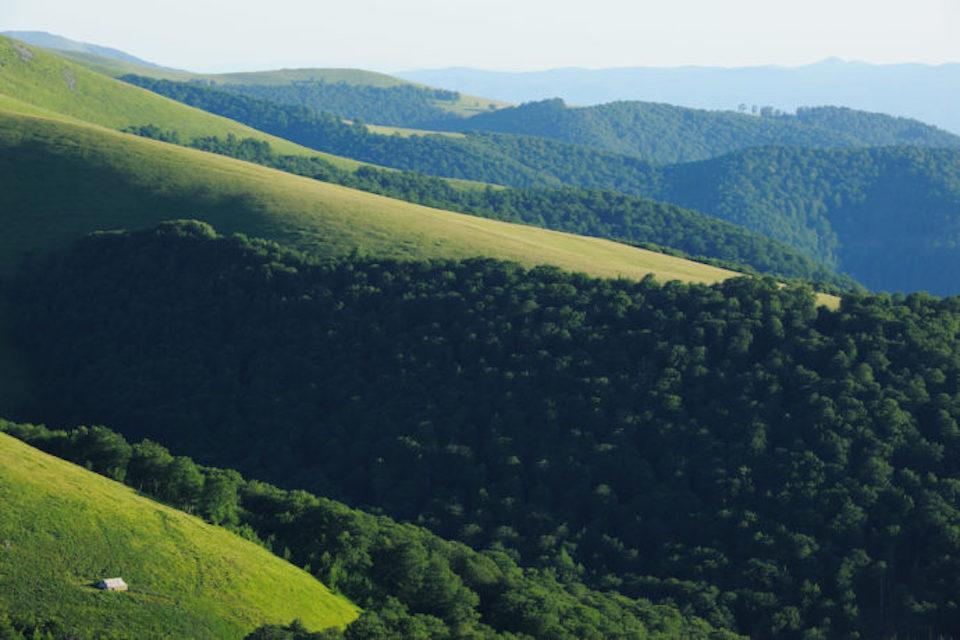
Efforts are underway to restore a viable population of free-ranging European bison in Romania's Southern Carpathian range/Life Bison
From the northwestern corner of Wyoming to the rugged landscape of the Southern Carpathian Mountains on the other side of the world in Romania, bison are on the move.
The goal in both locations is to bolster the numbers of bison in the wild and, along the way, improve environmental conditions, and provide some economic punch via tourism.
In Wyoming, five bison from Yellowstone National Park late last month were shipped out of quarantine to the Fort Peck Indian Reservation in north-central Montana. The long-awaited transfer is part of a plan to have the reservation finish off the quarantine of park bison to ensure they're not infected with brucellosis, a disease that can cause a spontaneous abortion in livestock. The shipment of the five bulls to Fort Peck was the first since 2012, when a pilot project for the quarantine protocol sent more than 60 Yellowstone bison to the reservation.
But then the program halted, bogged down by negotiations between Montana, the Animal and Plant Health Inspection Service of the U.S Agriculture Department, the National Park Service, and the Fort Peck tribes. Whether this five-bison transfer is the start of an ongoing transfer program remains to be seen. Yellowstone Superintendent Cam Sholly says there are talks to send 55 more bison to Fort Peck this fall, with additional transfers in 2020.
Brucellosis long has dogged Yellowstone bison, at least in the eyes of livestock producers in areas surrounding the national park. The disease can be ruinous to a rancher if his cattle herd is infected. However, in 2017 a National Academies of Sciences report concluded that elk, not bison, were the cause of brucellosis spreading to cattle in the Greater Yellowstone Ecosystem.
The quarantine program, if fully implemented, could regularly send Yellowstone bison to the Fort Peck Reservation, which would serve as a clearinghouse of sorts for other tribes and organizations looking for disease-free Yellowstone bison to add to their herds.
Across the world, meanwhile, there are efforts to kindle a wild herd of wisent, or European bison, in the Țarcu Mountains and the Poiana Ruscă Mountains that are part of the Poiana Ruscă-Țarcu-Retezat Corridor in the Carpathians of Romania. The two areas are corridors that tie together wilderness areas and are considered part of the Natura 2000 ecological network that stretches across the European Union.
The bison recovery area is within one of "one of Europe's largest wilderness areas, with five national parks and some 300,000 hectares where species and the landscape have truly been left untouched by humans," said Daniel Swartz, a regional communications manager for the WWF Danube-Carpathian Programme, which is supporting the bison program.
The Carpathians are Europe’s largest mountain range, stretching in an arc across the Czech Republic, Slovakia, Poland, Ukraine and Romania. Their elevation ranges from around 100m to 2.655m and the climate is moderately cool and humid. Forests cover approximately 50% of the region, and up to 90% between 1.000 m and 1.500 m. The region is critically important for biodiversity conservation in Europe, hosting vast semi-natural old-growth forest, many endemic species, Europe’s largest wolf and brown bear populations, and some of the largest wild populations of European bison.
European bison are thought to have gone extinct in the area two centuries ago. Across Europe, it's believed that there are fewer than 2,000 wild bison, and just five of 14 isolated herds are thought to be "demographically viable," according to the program's proponents, which include Rewilding Europe, the World Wildlife Fund, Life Bison, and the Natura 2000 project.
"Bison are landscape architects. The comeback of Europe’s largest land mammal enriches the food chain, while its browsing habit creates a mosaic landscape," a publication produced for the recovery project says. "Bison graze pastures, but unlike other herbivores they also feed on seedlings, young trees and bark - especially during the cold season. This can result in small clearings in woodland and this mosaic mix of forest and open spaces is where biodiversity thrives."
The goal of the recovery project is to have 100 bison roaming the Southern Carpathians by next year.



Comments
Nice!!!!!!!!!!!!!
Awesome. Hopefully we'll get to see the Wisent spread across all of Europe. It's a magnificent animal.